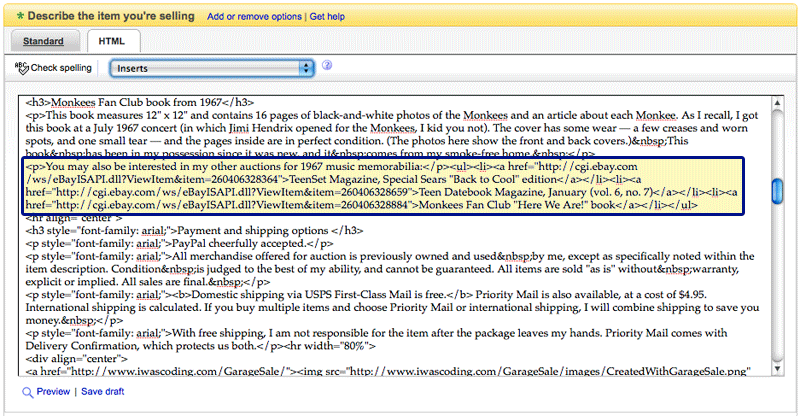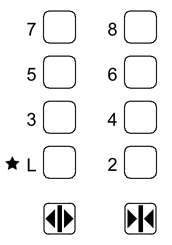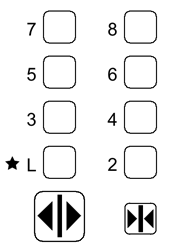I received my first camera for Christmas at age 12, got serious about photography at 24, and went digital in 2002. I’ve had a stock photography web site for over ten years, but it has turned out to be more a labor of love than of profit making. And with all the photo sharing going on these days, I finally decided it was time to let go somewhat, change my model, and start posting my work where it could more easily be seen — and, yes, used.
“Used.” That part gave me pause, I have to admit. I didn’t want my work used commercially or in such a way that my hand in it would be invisible or I’d lose ownership of it. On the other hand, with so many free images out there, available for noncommercial use, it had begun to seem pointless to decline to join in.
I did some research, tried out a couple of services, and asked people about their experiences. Below are the decisions I made. I hope they will be helpful to you as well.
Creative Commons License: Attribution, Noncommercial, No Derivatives
I selected the most restrictive Creative Commons license available. Creative Commons is an approach to licensing intellectual property while retaining copyright and some amount of control over how it is used. Here’s how the organization puts it:
With a Creative Commons license, you keep your copyright but allow people to copy and distribute your work provided they give you credit — and only on the conditions you specify here. (http://creativecommons.org/license/)
In this way I allow people to use my photos for noncommercial purposes only, and I do not permit them to make derivative works. And of course they must give me credit whenever they use my work. I’d like them to link back to my Flickr site as well, but I don’t see any way to insist on that.
Now, this license applies to free use only. Anyone who wants to use my work for commercial purposes, make derivative works from it, or use a larger/higher-quality image is more than welcome to contact me about licensing such usage. For a fee, of course. ![]()
Image Size, Quality: Small to Medium, Low to Medium
I upload low- to medium-quality JPEG images that are no larger than 600px in either dimension. This is perfectly sufficient for blogs and other noncommercial uses, but the resolution and image quality are inadequate for many if not most commercial uses. This strikes me as a reasonable balance between sharing and protection.
Service: Flickr
I created accounts with both Flickr and Google’s Picasa and tried them out. It didn’t take long at all (under an hour, in fact) for Flickr to emerge as the clear winner: Not only does Picasa fail to offer the restrictive Creative Commons Licenses, but its mapping interface (how you tell it where the photo was taken) is dreadful.
Note that Flickr’s free service imposes fairly low limits on what you can upload per month, but the kicker is that only your 200 most recently uploaded images will be displayed to people who visit your Flickr photostream. So I sprung for the US$24.95/year pro service. For me it was a small price to pay for removing the 200-image display limit.
Here’s my Flickr photostream.
Tagging: Full
I provide fairly complete tags for each image. So far the titles are not detailed (that is, many images have the same title, but for those that show the same subject — e.g., St. Peter’s Basilica in Rome — that’s probably OK. And as yet I have not put up many descriptions. I plan to go back and add detail later, but my first priority was to upload as much as possible, as soon as I could.
Also important was geotagging, or indicating on a map where the photo was taken. This helps people find your photos when they are searching for images of specific places. For some reason, Picasa doesn’t use the full detail of Google Maps, and its maps are less detailed than Flickr’s. But Flickr’s, in turn, are less detailed than the normal Google Maps, so I use both. I use Google Maps to zoom in on the specific spot I want to tag, and then I match the spot on the Flickr map and drag the images there. It’s a bit more work than I’d like, but I enjoy reading maps and am good at it, so for me it’s not onerous work at all. (Your mileage may vary.)
Organization: Sets and Collections
Flickr allows you to organize your work into collections and sets. I have (so far) four collections, each of which consists of 3-6 subgroups. Subject areas that are richer (e.g., Italy and the UK) are more than two levels deep.
Here are my collections.
Discovering Uses of My Work: Addict-o-matic™ and TinEye
It would be nice if people who used your work would be courteous enough to let you know about it. From what I understand, sometimes they do. But even if most of them did so, you’d still need to look for cases where they didn’t. Just in case. So you search for your name, assuming that people are honoring the attribution part of the CC license and listing your name as the author of the image.
I use a service called Addict-o-matic™ to perform this search. I could simply Google my name, but the nice thing about Addict-o-matic is that it uses several search engines to produce different areas of its results page, so that you can both be confident of greater coverage and see the references in cohesive groups.
Here’s my Addict-o-matic page, and here’s the first blog post to use one of my photos from Flickr.
I have also just started looking into the TinEye image search. You upload an image or give it a URL, and it searches for other uses of that image (and similar ones) on the Web. TinEye didn’t find that blog’s use of my Tintern Abbey photo because its data base of indexed images is still very small — but I think it looks very promising.
Acknowledgments
I am especially grateful to Ed Yourdon for starting me off by sharing his own approach. Ed’s been doing the Flickr thing a good while longer than I have, and I appreciate his generosity with information and suggestions.










27 June 2009
The Unbearable Rightness of Catastrophizing
Most people think of catastrophizing as a way of thinking that healthy people avoid. The online dictionaries agree. Wiktionary, for example, defines the act as “to regard a bad situation as if it were disastrous or catastrophic”; Go-Dictionary has it as “to envisage a situation as being worse than it is”. Clearly they’re seeing it as an unrealistically negative way of looking at events or circumstances. Perhaps it’s even a sign of mental health problems.
Psychologists go even further. According to PsychCentral, catastrophizing comes in a second form as well:
Yikes! But does it have to be that bad?
I say no. Not if we do it on purpose.
People who do usability assessment are accustomed to catastrophizing. When we conduct a usability review, we look for possible sources of confusion and error, so that designers can devise changes to mitigate them. However, this process need not be limited to post hoc review — nor should it; I recommend that designers do it regularly during design.
Design, of course, doesn’t need to catastrophize to the extent that assessment does — that is not its main function; and overdoing it can hamper creativity the way overediting does to writing. But I argue that a little attention paid to potential problems, during design, can go a very long way. Let me give an example.
On one of my projects — creating the interaction/interface design for a client, for another organization to build — I am the HCI specialist and my teammate is the prototyper, and we collaborate on creating the design. Very energetic and creative he is, up on all the latest interaction techniques and enthusiastic about their possibilities. More conservative about whiz-bang techniques I am, more grounded in decades of HF and HCI research findings. He enriches the design immeasurably; I keep it connected to the why. One of us proposes an idea, I catastrophize it, and we jointly come up with a way to address the problems. We both find our design sessions enjoyable and sometimes frustrating, but they produce a design that’s far better than anything either of us could do independently.
The client absolutely loves our work.
Now, I do not mean to imply that designers never consider the problems their designs might cause users. Many do; and of course the best ones do it very well. Some people, including David Malouf, professor of interaction design at the Savannah College of Art and Design, would even argue that Design as a process naturally includes such examination. I think I would agree with them. However, we all know that many if not most digital products are produced without a conscious design process along the lines that Dave teaches, let alone usability assessment. Whether or not a project has time and resources for formal usability assessment, a little catastrophizing during design can make a big difference.
If we aim to design products for the best user experiences, we must imagine the possible errors and problems that our designs might induce. This does not mean that (in the words of the psychologists) “we make it go wrong” (emphasis mine). Our looking for the possibilities has an entirely different effect, because it has an entirely different purpose, and we are doing it consciously and intentionally. Only by knowing what the potential problems are, can we prevent them. We must “look to the future and anticipate all the things that [could] go wrong.”
We must catastrophize, I say. We must catastrophize.